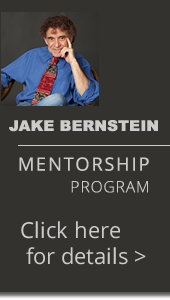The Do's and Don'ts of Order Placement
Now that you've read about the different kinds of orders here are some suggestions regarding their use. The purpose of learning how to use price orders to your advantage is obvious. Profitable trading, but in particular, day-trading depends a great deal upon your ability to make every penny and every tick count. You must be consistent and frugal in everything you do. Here is a list of do's and don'ts with respect to orders:
Don't use market orders excessively.
Market orders cost you ticks. Don't use market orders in spreads. If you lose a few ticks getting in and a few ticks getting out then you have lost good money, often unnecessarily. There are many viable alternatives to market orders. Some of them have been discussed above, some will be discussed below.
Don't use MOC orders unless absolutely necessary.
They will cost you ticks. Ticks add up. A few ticks here, a few ticks there, pretty soon it adds up to real money. If you must use such an order then you are probably better off selling at the market several minutes before the close than in giving your broker an MOC order. As far as I'm concerned an MOC will, most often cost you a few ticks.
Do use stop limit orders instead of stop orders.
In many cases you will be filled. If you are concerned about not being filled, put a one or two tick limit on your order.
Do understand how Fill or Kill orders can be used to your advantage in several ways.
If you need to exit or enter a trade and you don't want to wait to find out if you've been filled then use a FOK order. You'll get quick feedback and you'll probably save money. If you've never used such orders before then get your feet wet before using them extensively.
Do use FOK orders to "test" a market.
One good way to see how strong or weak a market may be is to use an FOK order. Here's what I mean. Let's say that June S&P futures are trading between 406.50 and 406.90. You have a buy signal at 406.50. Trading volume is light. following the buy signal, prices move quickly to 406.90 and you don't want to chase the market. You are concerned that the signal might not work this time because the market fell back quickly to the original breakout price of 406.50. You are hesitant to buy. What to do? Test the market by placing a FOK order to go long at 406.45 or 406.40, knowing that this is below the recent range of trades. You enter your order and watch the tape. It reads 406.55 when you enter your order. The ticks then go as follows. ... 406.55... 406.50... 406.55... 406.50... 406.50... 406.45B (your bid)... 406.45. You are filled at your bid price. What does this mean about the character of the market? Most likely this indicates a market that is weak. You were filled at a low bid which means that there are willing sellers. This tends to characterize a weak market.
On the other hand, consider the same scenario with a different outcome. You enter your bid at 406.45 FOK. The tape reads 406.55 when you enter your order. The ticks then go as follows: 406.65..... 406.55.... 406.55.... 406.55... 406.60... 406.65... 406.65... 406.60... 406.65.... 406.60... 406.65..406.70... 406.65... 406.70... 406.75... etc. The market comes close to your bid but never hits it. The order is returned killed. What does this mean? It most likely indicates a market with good demand. It suggests that you had better get on board quickly. You may even want to use a market order to do so.
Do use MIT orders even though they are not always efficient.
They are good for trading within a support and resistance channel, however, they will cost you ticks. As a rule, I like MIT orders.
Do use OCO orders, where accepted; they are very helpful.
They will help you bracket the market with different strategies and should be used wherever needed.
Don't get confused about First Open Only.
Some New York markets have staggered openings (i.e. sugar). In these markets each contract month is opened individually in chronological order, traded for a few minutes, and then closed so that another month may be opened. Once the process has been completed all months are opened again at the same time. The same procedure is used for closing. Should you need to buy one of these markets on the open you are advised to specify that you want your order good for the first open only. All too often the second opening price is distinctly different from the first open. This can cost you money.
Do insist on prompt reporting back of order fills.
It is absolutely necessary for you to know when you've been filled and when you've not been filled. You must be strict with your broker in demanding fills back as soon as possible. Do not accept excuses, particularly in currencies, Tbonds, S&P, and petroleum futures where flash fills are easily given. A flash fill is one for which you may remain on hold as your order is hand signaled to the pit. While there will be some conditions in which delays are understandable, such delays are anathema, particularly to the day-trader, and must be avoided whenever and wherever possible.
Do know which exchanges will accept certain orders.
The rules change from time to time and from one market condition to another. If you don't know the rules, find them out. The Chicago Mercantile and IMM will accept almost all orders almost all the time. The Chicago Board of Trade is a stickler for accepting only certain types of orders. They do not accept MIT's. Some New York markets have restrictions as well.
Do find out how your broker places your orders.
Does he or she call the floor? Are your orders put on a wire for execution? Does your broker need to call someone who will call someone else who will then call someone else? This all takes time. Day-traders can't afford the time for such delays. Ask your broker for his or her procedures and deal only with those who can get you the fastest fills. Anything else will cost you money no matter how
low the commission rate. Don't be penny wise and pound foolish.
Don't forget that Globex (24 hour) trading requires that you use even more discretion in order placement. Be very careful. Learn the rules and learn to deal with the lack of liquidity.
Do use price orders all the time when trading futures options.
A market order in options will frequently bring you shockingly bad results due to the poor liquidity. Always use price orders in futures options! Always!
Do learn how to place orders.
Make sure your terminology is correct, make certain you mean what you say, and make sure you listen to the order as it is repeated back to you. You are liable for your orders. Errors will cost you.
Don't beat around the bush when you place your orders. Speak quickly, decisively, and clearly.
Do keep a written record of your orders.
Even if you trade only one market, once a day, keep a written record which should include the market, whether you bought or sold, the type of order, the quantity, the price you were filled at and, your order number (as given to you by the order taker) and the time you placed the order. Don't fail to note all of the above. It will save you a great deal of money in the long run.
Don't delay in reporting all errors. The longer you wait to report an error, the great the less the odds of having it rectified.
Do always, always, always, always check out at the end of the day, especially if you have traded a great deal.
By "check out" I mean make certain you have received all of your fills and that you have closed out all of your trades. Many brokerage firms will send you a preliminary run at the end of the day via modem. Print out the run and check it against your order sheet. REPORT ALL ERRORS IMMEDIATELY!
CHECK YOUR ORDER SHEET BEFORE MARKET CLOSING
Make certain you have taken the necessary steps to close out positions. The more you trade and the larger your positions, the more important this will be.
These are just a few suggestions which will, I feel, help you master the pragmatic end of day-trading. Don't ever discount the importance of proper order placement and consistent procedures. The wrong order in the wrong market can cost you plenty. I know. I've made all of these mistakes at one time or another, and I don't want you to have to repeat them. Learn it the easy way, from me! Don't learn it the hard way, by losing money.





